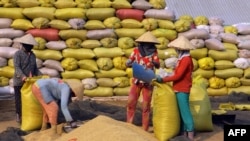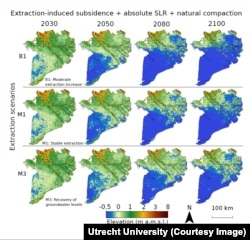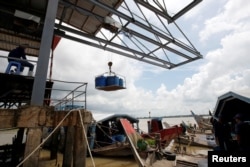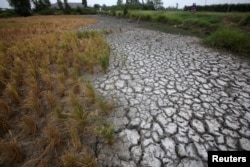Nearly the entire Mekong Delta in Vietnam — an area that helps feed about 200 million people — will sink underwater by the year 2100 at current rates, a new study predicts.
The delta, which is home to almost 18 million people and produces half of Vietnam's food, faces this potential humanitarian crisis largely because the heavy extraction of groundwater is causing land to sink as sea levels simultaneously rise, the study found.
Researchers at Utrecht University created a delta-wide numerical model to track the impacts of groundwater exploitation over the past 25 years and use that as the basis of future predictions.
When combined with rates of sea-level increase because of climate change, they found that no matter what action was taken the vast low-lying delta plain will be lost — though changes to land use could salvage other areas.
"The results revealed that when groundwater extraction is allowed to increase continuously, as it did in the past decades, extraction-induced subsidence could potentially drown almost the entire Mekong delta," they concluded.
Philip Minderhoud, a subsurface and groundwater systems researcher at Utrecht University who led the study, said groundwater extraction was one of the most important in a raft of factors causing the delta to sink on average by about 1 centimeter per year.
"The delta's going to see a lot of changes in the coming decades," he said.
Fueled by Vietnam's transition to a market-based economy in 1986, groundwater extraction had accelerated from practically nothing 30 years ago to the 2.5 million cubic liters now sucked out of the delta's water table every day.
The loss of water, he explained, reduced pressure in the underlying geology, causing the delta to sink.
"Of course the people in the delta, their development over the past decades, was partly possible because they had this groundwater source as a free resource of fresh water," he said. "That is going to be a major challenge because you either accelerate the speed at which you're drowning or you don't have anything to drink and to water your crops with."
At the same time, he said, the sea level is rising at a rate of about 3 to 4 millimeters per year.
Man-made burdens
The weight of structures on the delta, decreased upstream sediment flows and natural compaction are also contributing factors to the loss of delta land, he said.
"But it [groundwater extraction] is the only cause that you as a human can really actively change if you want to reduce the amount of subsidence," he said.
While residents of the delta have proved themselves adept at raising houses and roads to deal with the problem, the impact to agriculture would be unavoidable and severe, he added.
Vietnam is the world's second largest rice exporter, and 95 percent of it is produced in the Mekong delta, which also accounts for 60 percent of its fish exports.
Bui Chi Buu, a Vietnamese government adviser on rice production and former director-general of The Institute of Agricultural Science for Southern Vietnam, said the economic impacts of the land loss remained unclear.
"We worry about the future. The fresh water resource, it means the natural water resource come from the Mekong river in the dry season is not right," he said.
Floods, drought, crop losses
In 2016, Vietnam lost more than $1.6 billion because of floods and drought that destroyed at least 300 million tons of rice in the delta, he said.
The immensely vivid and fertile region is known as Dong Bang Song Cuu Long in Vietnamese — the delta of nine dragons — after the nine branches of the Mekong that deposit rich sediment as they fan out into the ocean across the roughly 40,000 square kilometer area.
Those nine branches had now decreased to seven, Buu said.
"But in the future maybe we have four or five, I don't know," he added.
Lost sedimentation
Loss of naturally replenishing sediment is another critical factor in the sinking of the delta.
Upstream dams on the Mekong, which flows more than 4,000 kilometers from the Tibetan plateau in China through Laos and Cambodia before discharging through the delta, had led to about a 40 percent loss in sediment flow, he said.
A 2018 study by the Mekong River Commission found a catastrophic 97 percent of sediment flow to the delta would be lost by 2040 if all planned dams on the Mekong and its tributaries go ahead.
Buu said policy responses to the myriad forces eroding the delta, potentially including dikes and sluice gates, were in the works.
Pham Van Hung, deputy general director of the Division for Water Resource Planning and Investigation for the South of Vietnam, who also contributed to the study, said some groundwater extraction restrictions were recently introduced by the government.
Tens of millions of tons of sand were also being mined from the Mekong, including in the delta, every year, compounding the problem, said WWF-Greater Mekong's Water Lead, Marc Goichot.
All of these forces impacted a dynamic equilibrium that naturally replenished the delta.
"What is clear is they all are contributing to the same thing," he said. "The sinking of the delta is a huge issue."










